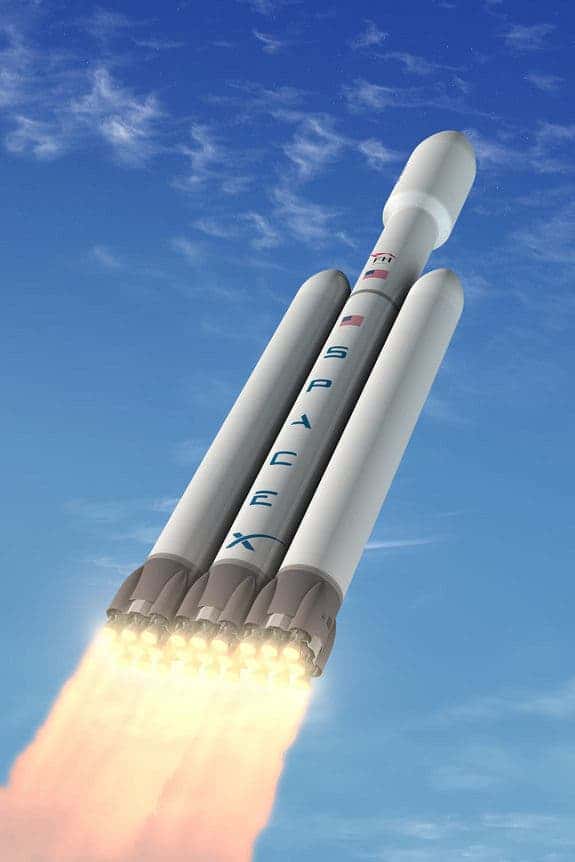
Artist rendition of the SpaceX's Falcon Heavy plummeting towards the stratosphere - the most capable rocket operating today, according to the company. (c) SpaceX
The dawn of a new space era has begun – the commercial space era! As governments constantly cut space exploration budgets, the world is forced to turn its gaze upon the private sector which is more than willing to lend a commercial hand to space agencies. Space tourism, satellite orbit delivery, ISS cargo taxi, you name it and rest assure that top aeronautical companies can handle it.
In an extremely remarkable feat, though, I’m given to find out that SpaceX, one of the major private space flight players in the world, just unveiled a new very powerful un-manned rocket called the Falcon Heavy. When completed, the Falcon Heavy will be the most powerful commercial rocket ever built and haul much heavier loads than the company’s previous boosters. To be more exact the Falcon Heavy will be able to carry about 117,000 pounds (53,000 kilograms) of cargo to orbit, twice as roomy as NASA’s Space Shuttle, and second in size only to the Apollo program’s mammoth Saturn V.
In the spirit of efficient entrepreneurship and cost-effect business solutions, SpaceX officials announced that they’ll be able to launch at a cost of just $1,000 per pound, about one-tenth the cost per pound on NASA shuttle launches. The price for a launch aboard the new Falcon Heavy is set for $100 million.
“Falcon Heavy sets a new world record for the cost per pound to orbit,” SpaceX founder and CEO Elon Musk said. “That’s a pretty huge leap in capability.”
While it’ll initially be unmanned, SpaceX says it meets human flight standards and could even be employed for missions to the Moon or even Mars.
“It can launch people if need be and do so safely,” Musk said of the Falcon Heavy. “It has so much more capability than any other vehicle I think we can start to realistically contemplate missions like a Mars sample return.”









